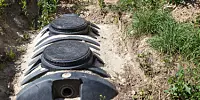How do septic tank inspections work in France?
The checks take place at least once every 10 years
New checks have been put in place progressively from around 2005
M G White / Shutterstock
Several readers have requested more information about what they should expect from official septic tank inspections, including how often they take place.
The checks, which take place at least once every 10 years, ascertain whether the septic tank is working correctly and if it has been properly emptied.
Property owners will be notified in advance of a visit, and must cover the cost of the inspection themselves.
Each commune has a Service Public d'Assainissement Non Collectif (SPANC) assigned to it, usually by the communauté de communes.
Inspection prices are fixed by SPANC, and are usually between €100 and €150.
The checks have been put in place progressively from around 2005.
Although the term fosse septique is still commonly used, all French installations have for years officially been fosses toutes eaux, because as well as treating waste from toilets, they also treat sink, bath and shower water.
When you get notification of a SPANC visit, or if you have arranged for your septic tank to be emptied, you should make sure that any grass or other weeds which might have grown on or around the tank are pulled up, and the inspection/access hatches are easily accessible.
The inspector should arrive with digital photographs from when the system was first installed – when installing a tank make sure you do not cover it up before the inspection and photographs are taken, or you will have to dig out the trenches again.
As well as checking the paperwork and opening the tank to make sure everything is in good order, the inspector will use the photographs to find the drainaway bed and check that no trees or deep rooted shrubs have been planted over it. Breather pipes will also be checked.
It is usually fairly straightforward, although occasionally, after 20-plus years, concrete tanks may start to corrode from reactions with gases in the tank.
If the inspector thinks it has reached a stage where the tank might crack, he may give you a notice to replace it.
Emptying the tank is often much more of a headache. The first hurdle is finding someone to do the work – they must have a licence from the prefecture.
Rather than searching online, it is better to go to the SPANC offices to see their list of registered tank emptiers.
In rural areas this often includes local dairy or pig farmers, who already have waste management systems installed and are likely to have tanker trailers and pumps. Getting licensed to empty septic tanks has provided a welcome new revenue stream.
Prices are usually between €100 and €200, depending on how far the farmer has to travel.
If you call a specialist firm based outside the area, the price may be double this as the firms usually work in industrial environments and do not adapt their prices for homeowners.
Once your tank has been emptied, make sure you get an official certificate to show to the SPANC inspector.





























